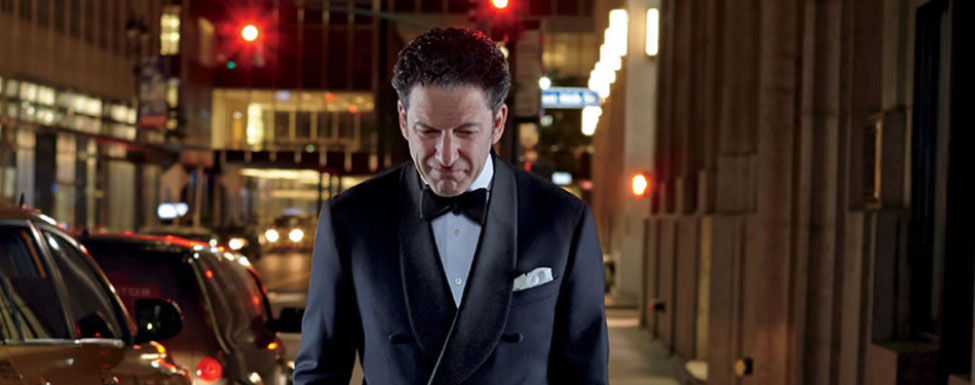Pizzarelli on Jazz
Celebrated jazz guitarist John Pizzarelli is a rarity—a successful New Yorker who has yet to buy a retreat in the Berkshires. But that does not mean he doesn’t spend time here as he makes frequent appearances in the region.
“I’ve played at Tanglewood a ton,” he said in a recent interview, “and I’ve appeared a number of times in Great Barrington (at the Mahaiwe Theatre). It’s a great place to play and a great town to walk through.”
He returns to the Mahaiwe December 11th at 7PM with his wife, vocalist Jessica Molasky, as part of a whirlwind pre-Christmas tour highlighting his jazz reimaginings of Paul McCartney songs.
The translation of the pop tunes into the jazz genre came at the behest of McCartney himself. Midnight McCartney originated in McCartney’s Grammy-winning album, Kisses on the Bottom, released in 2012. Pizzarelli, who has collaborated with the former Beatle over the years, played guitar on some of the album’s tracks and, months later, McCartney wrote suggesting that he record some of his lesser-known songs in a jazz style.
With unwonted modesty, McCartney wrote, “I realize this may be a little immodest, if not pushy. …” but went on to suggest the album be called Midnight McCartney and even outlined the cover concept. And thus, the project was born.
Pizzarelli said the first task was to identify the songs to be covered. “The lure is to find songs that can be translated to swing jazz,” he said. “You have twenty songs on the table and you want to get that down to fourteen. People will ask, “Why didn’t do this one or that one?’ A, there are only so many songs you can do, and B, others were better.”
“It’s a matter of finding the ones that work best,” he continued. “I would think, ‘What if we did this song as a bossa nova?’ You slow it down, change the chords to jazz chords, and all of sudden Silly Love Songs sounds like a bossa nova, which is really quite fun. (McCartney) might do a song with an electronic sound; I make it sound like Count Basie or something Nat King Cole would have played in a different time and with a different band.”
He said he and his wife have rearranged songs for jazz renditions so often “it was only a matter of finding the songs” in McCartney formidable discography. To do so, they worked with Nancy Jeffries, who runs McCartney’s New York publishing company.
Pizzarelli and Molaskey co-produced the album with Molasky providing background vocals. The album became a family affair, with John's father, famed jazz guitarist Bucky Pizzarelli, adding rhythm guitar on several tracks, brother Martin on bass and daughter, Madeline, transcribing Warm and Beautiful for her father to sing in a different key.
“James Taylor’s piano player drove down from Tanglewood and helped us and we got a demo off to Nancy, saying, ‘This is what we’re thinking.’ Everyone had a little idea along the way and by the end of the year, we had a budget and plan to move forward.”
In an age when many musicians work in private studios, adding their own layer to tracks that have been mailed to them, Pizzarelli still believes in collaboration. “There are certain aspects of pop music that I really like,” he said, but adds that machine-produced sounds sometimes do not connect with listeners.
“When they recorded the great jazz record, Kinda Blue, there were five or six guys in a studio, all of them there in the room playing those charts, and there is something about the force of that music. It’s the only way I know how to do it. We’ll have fourteen people on stage for this show and that’ s really great.”
Pizzarelli has been making music the old-fashioned way for decades. He said his uncles first taught him to play the banjo at age six, but “there were guitars in the house that I picked up and played along with records. My father heard me learning and called me over and let me play couple of songs with him. When he realized I was interested he introduced me to jazz.”
In addition to being a bandleader and solo performer, Pizzarelli has recorded nearly 40 albums, either as the leader or with other performers such as James Taylor, Natalie Cole, Kristin Chenoweth, Tom Wopat and the Dave Van Ronk, as well as such leading jazz artists as Rosemary Clooney, Ruby Braff and Buddy DeFranco.
In 1993, he opened for Frank Sinatra’s international tour and then joined in the celebration for his 80th birthday at Carnegie Hall, singing I Don’t Know Why I Love You Like I Do with his father accompanying him.
He has performed on popular national television shows and in 1997 made his Broadway debut in the musical Dream, a revue of Johnny Mercer songs.
With his wife, he has a radio program, Radio Deluxe with John Pizzarelli, heard on forty radio stations and he continues to tour throughout the United States, Europe, South America and Japan.
In 2009 he received the Ella Fitzgerald Award from the Montreal International Jazz Festival.
“It’s an amazing thing to do for a living,” he said. “You get to different places, meet different people. It’s terrific to think that a record you made in 1993 has been on somebody’s turntable or in their collection for so long. It’s really thrilling.”
Tickets for the Mahaiwe performance are $29–$120 and can be reserved by calling 413-528-0100 or e-mail info@mahaiwe.org.

